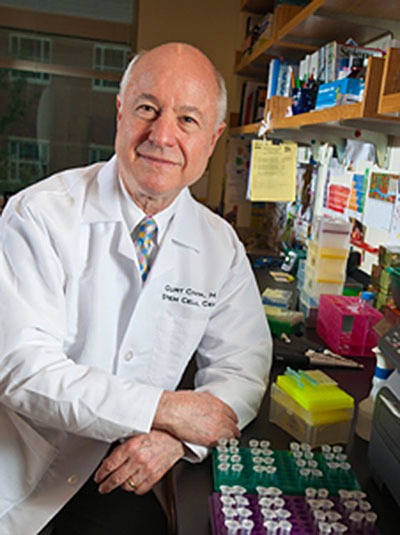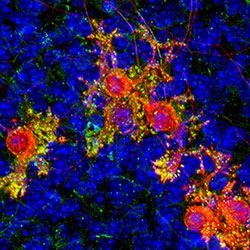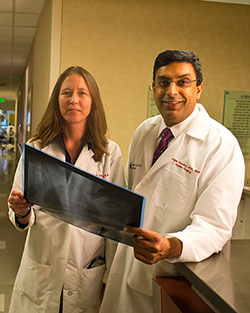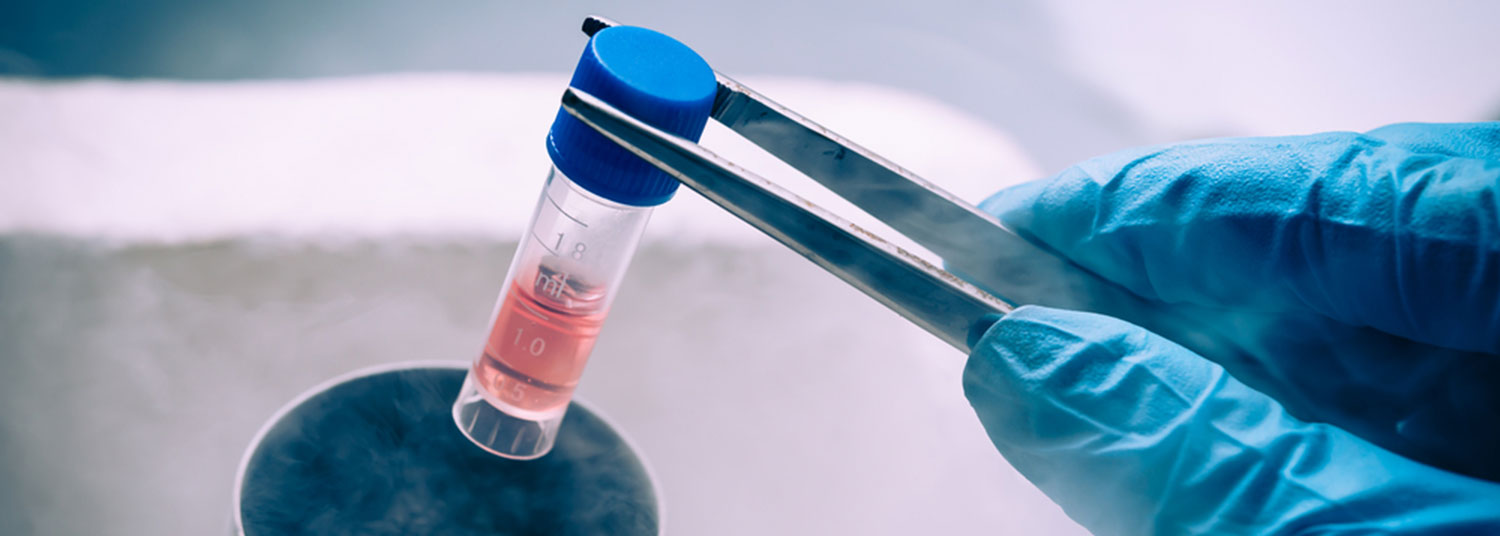Excellence in Stem Cell Research
 The secret ingredient behind the next revolution in medicine lies within each of us. Special cells in our bodies, called stem cells, have the ability to both extensively self-renew and, through a series of highly complex molecular events, turn themselves into all of the unique cells found in the human body. Scientists harnessing this remarkable latter ability, referred to as pluripotency, are using stem cells to repair or regenerate damaged tissues and organs, providing potential treatments for diseases such as Alzheimer’s and Parkinson’s disease, diabetes, heart disease, stroke, arthritis, and cancer. In addition, stem cells can be used to create specialized tissues to test out drugs before prescribing them to humans.
The secret ingredient behind the next revolution in medicine lies within each of us. Special cells in our bodies, called stem cells, have the ability to both extensively self-renew and, through a series of highly complex molecular events, turn themselves into all of the unique cells found in the human body. Scientists harnessing this remarkable latter ability, referred to as pluripotency, are using stem cells to repair or regenerate damaged tissues and organs, providing potential treatments for diseases such as Alzheimer’s and Parkinson’s disease, diabetes, heart disease, stroke, arthritis, and cancer. In addition, stem cells can be used to create specialized tissues to test out drugs before prescribing them to humans.
Scientists are also using stem cells to learn how the human body is made and why some cells develop abnormally and lead to problems such as birth defects and cancer. Because stem cells eventually differentiate into mature cells that have specific jobs to do, they are actually quite rare in adults, meaning that the stem cells that scientists and clinicians work with are often donated from embryos. Therefore, another intense aspect of investigation is learning how to derive fully functional stem cells from adult cells.
The University of Maryland School of Medicine has quickly become a leader in the field of stem cell research. The Center for Stem Cell Biology and Regenerative Medicine opened in 2009 with the recruitment of Curt I. Civin, M.D., as its founding director. The mission of the Center is to bring together the scientific and clinical expertise necessary to discover how stem cells work and translate that knowledge into therapies for a wide variety of human diseases.
The Center is working towards several specific goals: developing a highly collaborative and interdisciplinary research environment; encouraging rapid translation of discoveries into innovative and practical clinical applications that will enhance the understanding, diagnosis, treatment, and prevention of human diseases; collaborating with pharmaceutical and biotechnology companies to stimulate investment and local economic growth; educating the local community about stem cell research; and advocating for the State of Maryland’s continuing support of stem cell research.
 Capabilities
Capabilities
The Center operates two collaborative activities that act in tandem to fuel stem cell research by enhancing stem cell production and facilitating their transition into numerous cell types.
The first collaborative activity grows a variety of stem cells from multiple species, particularly embryonic stem cells and induced pluripotent stem cells, which are cells that can be genetically reprogrammed to behave like embryonic stem cells. Scientists from the University of Maryland, the National Institutes of Health, other universities and a myriad of biotechnology companies, will be able to expedite their research through access to the stem cells grown by this collaboration.
“In our bodies, stem cells are very, very rare,” says Civin. “When we take them out and try to grow them in dishes, they prefer to die. Their second preference is to differentiate so they’re no longer stem cells. If they’re going to be used as therapeutic cells, or even used for research, we’d like to be able to grow up lots and lots of them.”
In the second collaborative activity, stem cells are modified genetically, providing scientists models for many different diseases. Cells are engineered to increase or decrease their production of certain molecules, a painstaking process that enables detailed mechanistic studies of cell function.
 Researchers
Researchers
More than 70 faculty scientists and physicians at the University of Maryland contribute to achieving the Center’s goals. In addition to the University of Maryland School of Medicine, members of the Center are affiliated with special laboratories, programs, and schools throughout the University of Maryland system. Faculty members are split into four Working Groups:
- Cardiovascular Stem Cell Working Group: Novel activities of stem cells are exploited to develop effective, safe, and durable therapies for heart disease.
- Hematopoietic and Cancer Stem Cell Working Group: This Working Group studies biology and applications of hematopoietic stem cells, including bone marrow transplantation, and also seeks to learn how to better kill cancer stem cells, using novel drugs and immunotherapies.
- Mesenchymal Stem Cell Working Group: This Working Group is currently focused on the ability of mesenchymal stem cells to form cartilage and bone. This group also includes research on skin stem cells.
- Neural Stem Cell Working Group: This Working Group brings expertise in developmental, systems and cell neurobiology to an effort to use stem cells to create potential therapies for spinal cord injury, neurodegeneration, traumatic brain injury, epilepsy and psychiatric disorders, including addiction and schizophrenia. This group also includes research on stem cell reprograming.

Dr. Sunjay Kaushal uses stem cells removed during heart reconstruction surgery in children to treat patients who have suffered heart attacks, heart failure and congenital heart disease.
Dr. Ricardo Feldman is working to generate patient-specific induced pluripotent stem cells (iPSCs) for modeling and treating Gaucher’s disease, Parkinson’s disease, and other neurodegenerative diseases.
Dr. Curt Civin is using next-generation gene editing in an effort to discover a cure for sickle cell anemia—one of the most common genetically inheritable diseases.
Collaborations
The Center has struck up a collaborative agreement between Maryland and California, two states at the forefront of stem cell research, to pool resources to help scientists in both states share their talents and discoveries.
The Center also collaborates closely with local biotechnology companies, such as Paragon Bioservices, Inc., one of the largest companies in the University of Maryland’s BioPark. Paragon worked with the Center to facilitate the research, commercial development and clinical application of stem cell-based technologies and therapies.
“We’ve been pushing the envelope on interacting with industry,” says Civin. “We go first to Maryland companies. We can go out and visit them, instead of just emailing and talking long distance about the process. Then we can do the first few experiments together in person to make sure we’re doing things right from the start.”

